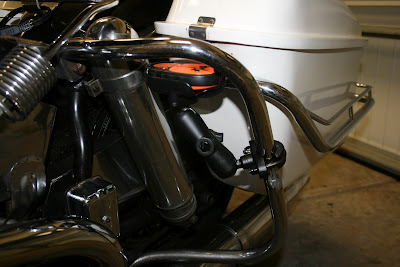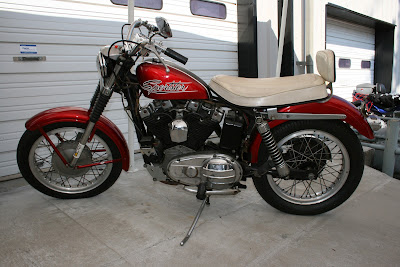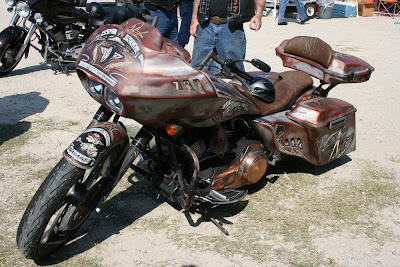To tighten the springs, you first have to remove the seat post assembly. Pull the seat pin and flip the seat forward to get it out of the way. Then look under the bike and find the 7/8" nut that holds the bottom of the assembly in place. It's called the post clamp nut.
Remove the nut and use a rubber mallet to tap the end of the seat post assembly up through the seat post tube. Once the assembly is loose, pull it straight up out of the frame tube.
Now you'll have a greasy seat post assembly, ready to adjust. Make sure you have a spot ready on your bench where you can set it down and not get grease all over the place.
At the lower end of the assembly there are four different nuts for either making adjustments or locking them in place.
To tighten the springs, you'll need to adjust the 7/8" nut that is up against the springs. Use a 9/16" wrench to hold the shaft steady with the lower lock nut. Having a thin 7/8" wrench will make this part much easier.
Once the adjustments are finished, tighten down the lock nuts and reinstall the assembly. Make sure to note that there is a flat side on the lower rod nut that fits into a flat spot on the bottom of the seat post frame tube. This keeps the entire assembly from twisting, so it's important to make sure it is seated correctly in the frame. The last steps are to tighten the seat post clamp nut, fold down the seat and pop the seat pin back in.
I'll post the results of the adjustments when I return from the road run next week.




































.jpg)

















